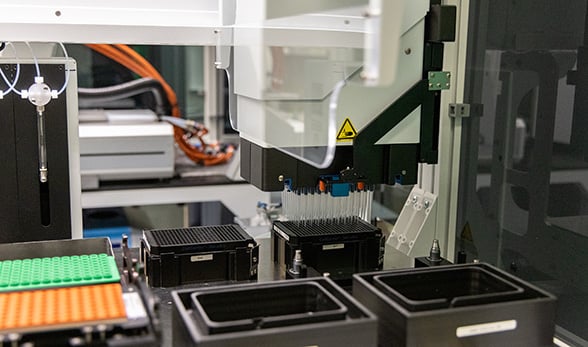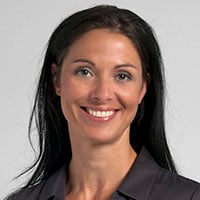Although a search for “quantum” in the popular media turns up mostly references to a revived TV series (“Quantum Leap”) and a recent superhero film (“Quantumania”), in the science world, the actual technology is creating quite the buzz.
Based on the (for most people) mind-boggling principles of quantum physics, quantum technologies could begin transforming everything from cybersecurity to medicine in as little as five to seven years, according to insider predictions. And Colorado – its flagship university system included – is expected to help lead the revolution.
Some Quantum Basics Defined
What Is Quantum ...
|
Last fall, the U.S. Department of Commerce Economic Development Administration designated Colorado’s Elevate Quantum a Regional Technology Hub for Quantum Information Technology (QIT). The national designation, along with its related funding opportunities, has added oomph to the state’s innovative work in the area.
CU has strong footprint in the field
“There is a lot going on in Colorado right now because of the tech hub designation,” said Laura Buccini, DrPH, MPH, MA, assistant vice chancellor for research development and strategy at the University of Colorado Anschutz Medical Campus. “But quantum sensing and quantum computing are things we’ve been talking about in medicine for years.”
CU Anschutz is part of Elevate Quantum Colorado, along with CU Boulder, CU Denver and other institutions of higher education. The consortium includes over 70 private and government industry companies and organizations.
The University of Colorado has for years helped fuel the excitement around quantum technology, with CU Boulder standing out as a global leader in quantum research and education. The campus under the Flatirons is home to four Nobel Prize-winners, who won the prestigious award for their quantum-related work, and will break the trail ahead for the university.
Other CU campuses also offer vital strengths for advancing quantum technologies. CU Denver educates tomorrow’s quantum workforce through strong engineering and computing programs and a new Quantum Information Technology Certificate Program, and CU Anschutz brings the medical expertise to the picture.
Campus offers its medical trio of expertise
“As the largest academic medical center in the Rocky Mountain region, CU Anschutz is uniquely poised to lead quantum use cases in human health,” Buccini said of the campus, a 230-acre hub of its own recognized for biomedical research, healthcare and education. “And that means tackling some of the biggest challenges to human health for all populations.”
With major hurdles yet to overcome in taking quantum science for healthcare and medical research mainstream, CU Anschutz is focused on building partnerships and conceiving and assessing quantum’s possibilities in medicine, Buccini said.
“Translating this for medicine will require a collaborative ecosystem where technologies are developed and co-evolve with clinical, biomedical and quantum experts working together. Our goal right now is to create that infrastructure and synergy,” she said.
“We are also imagining ways quantum technology can transform healthcare. As a field, we need to continue to explore how quantum can solve very specific problems that will build on one another so that within years we have broadscale applications.”
Here is a small sampling of some of the quantum-related possibilities that are on the CU Anschutz radar:
Drug discovery
Many experts predict quantum computing will transform drug discovery, quickly identifying new drug candidates by simulating how molecules will behave and interact with biological targets.
“We have an amazing drug discovery center here that is heavily involved in this initiative and in really understanding quantum’s capabilities of taking drug development and discovery forward,” Buccini said of the Center for Drug Discovery (CDD) at the Skaggs School of Pharmacy and Pharmaceutical Sciences, led and founded by Daniel LaBarbera, PhD.

A one-of-a-kind robotic system installed at the CU Center for Drug Discovery in 2021 already catapulted the campus ahead in the field by automating and dramatically speeding drug screening abilities. |
Already powered by novel robotic technology that can evaluate hundreds to thousands of different drugs at a time, LaBarbera’s laboratory is taking the campus to the forefront of drug innovation by shaving time off the years-long process.
Experts predict that, with quantum technology, the time from drug concept to clinic can be reduced from years to months, Buccini said. “That would truly transform the field of medicine.”
Telehealth/mHealth
Quantum’s potential to secure and compress data as never before also will open doors to mobile and telehealth advancements, two areas critical to the CU Anschutz mission, Buccini said.
“We’re uniquely positioned here in Colorado for that type of research because so much of our patient population that we serve is rural-remote.”
Securely communicating medical data and patient information, as quantum is capable of, can dramatically improve patient-provider communication through telehealth technology, boosting care for Colorado’s rural mountain and Eastern Plains residents, Buccini said.
And quantum sensing potential for miniaturization could help minimize crucial diagnostic imaging systems for remote access, such as CT (computed tomography) scans and MRIs.
“How do we get an MRI (magnetic resonance imaging) machine to a real remote area? We cannot,” Buccini said. “Quantum has the ability to take these big machines and make them smaller but still robust and precise.”
Clinical trials
Healthcare innovation relies on clinical trials to assure efficacy and safety, but difficulties recruiting enough volunteers – let alone a diverse group of participants representing the population – halt many trials before they begin.
“Moving that dial forward is so important, and I imagine quantum technology changing the face of clinical trials as well as the time they take,” Buccini said. “The idea is, if we can get there, and we think that we can, that we can really move to in silico clinical trials (ISCT), so using computation, using virtual models, as opposed to having to use humans.”
Quantum’s ability to speed and enhance genomics analysis – understanding the genetic makeup of individuals – will allow trials to look very different and feed that modeling based on computer simulations.
“The idea is, if we can get there, and we think that we can, that we can really move to in silico clinical trials (ISCT), so using computation, using virtual models, as opposed to having to use humans.” – Laura Buccini, DrPH, MPH, MA
Medical imaging
Possibilities abound in medical imaging, where quantum technology was first applied in healthcare with the advent of the MRI machine.
“We are engaging with leaders of clinical and research imaging facilities across the CU Anschutz Medical Campus, who see potential of rapid feedback imaging for faster, personalized clinical decision-making,” Buccini said.
That includes Natalie Serkova, PhD, professor and vice chair for research in the CU School of Medicine Department of Radiology, who predicts the increased sensitivity and improved resolution of quantum will offer many advancements, including how drug delivery can be seen, literally, in real-time, Buccini said.
For example, with quantum, imaging has the potential to show how a drug, when combined with a tracer – the substance that shows color on PET (positron emission tomography) scans – makes its way through the body and gets absorbed into a patient’s system.
“Or imagine having access during cancer surgery to a pathology report almost instantly,” Buccini said. “The idea is we’d be able to process and act on that information while you’re on the table. With quantum technology, we could know if the tumor and all margins were removed right then, rather than having to bring you back in for another surgery.”
“That’s the excitement of quantum: It really runs these probabilities in real time,” Buccini said. “Right now, we have samples of that only on a very small scale, but if we can take these big human health problems and expand those probabilities, I think the possibilities are really endless.”




